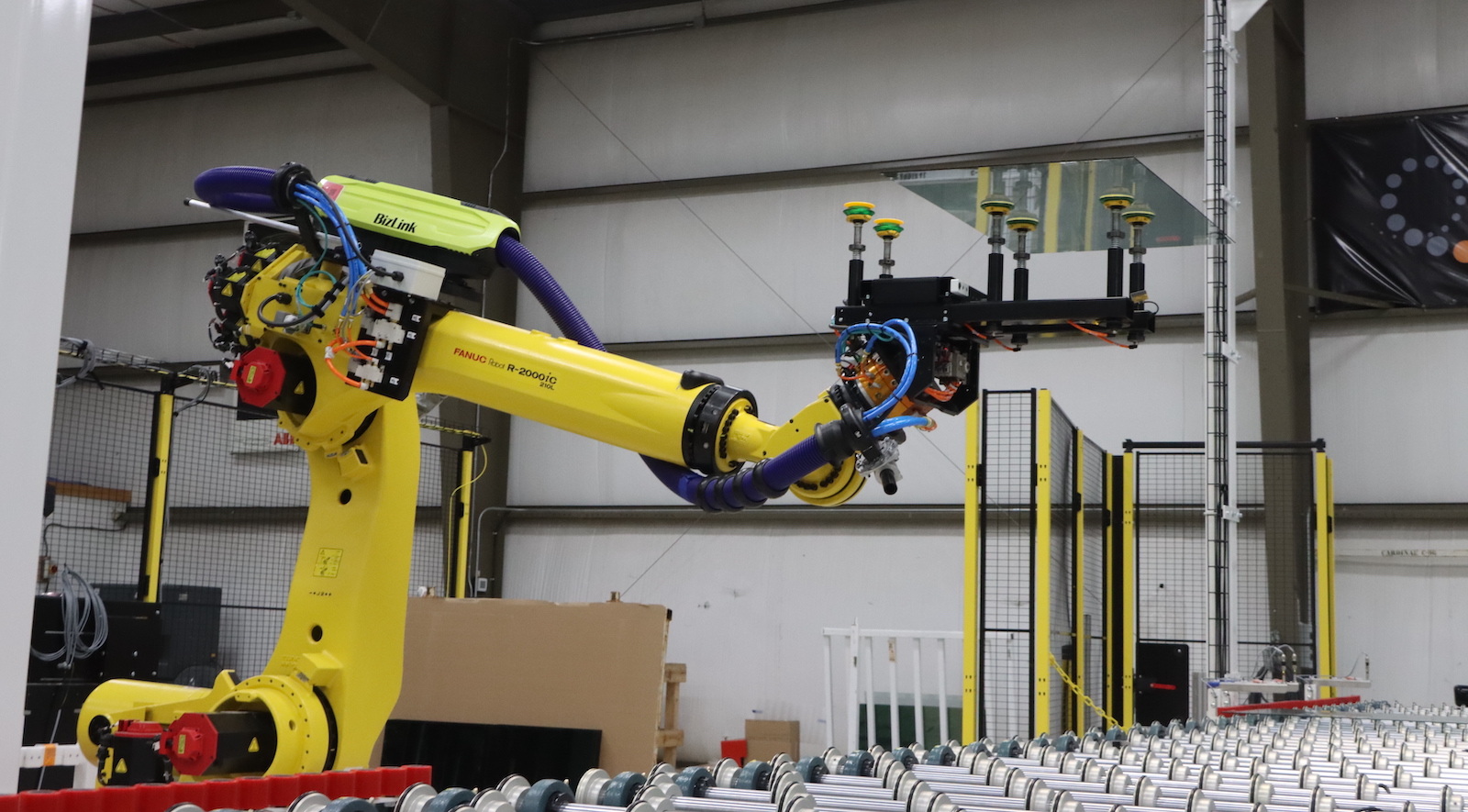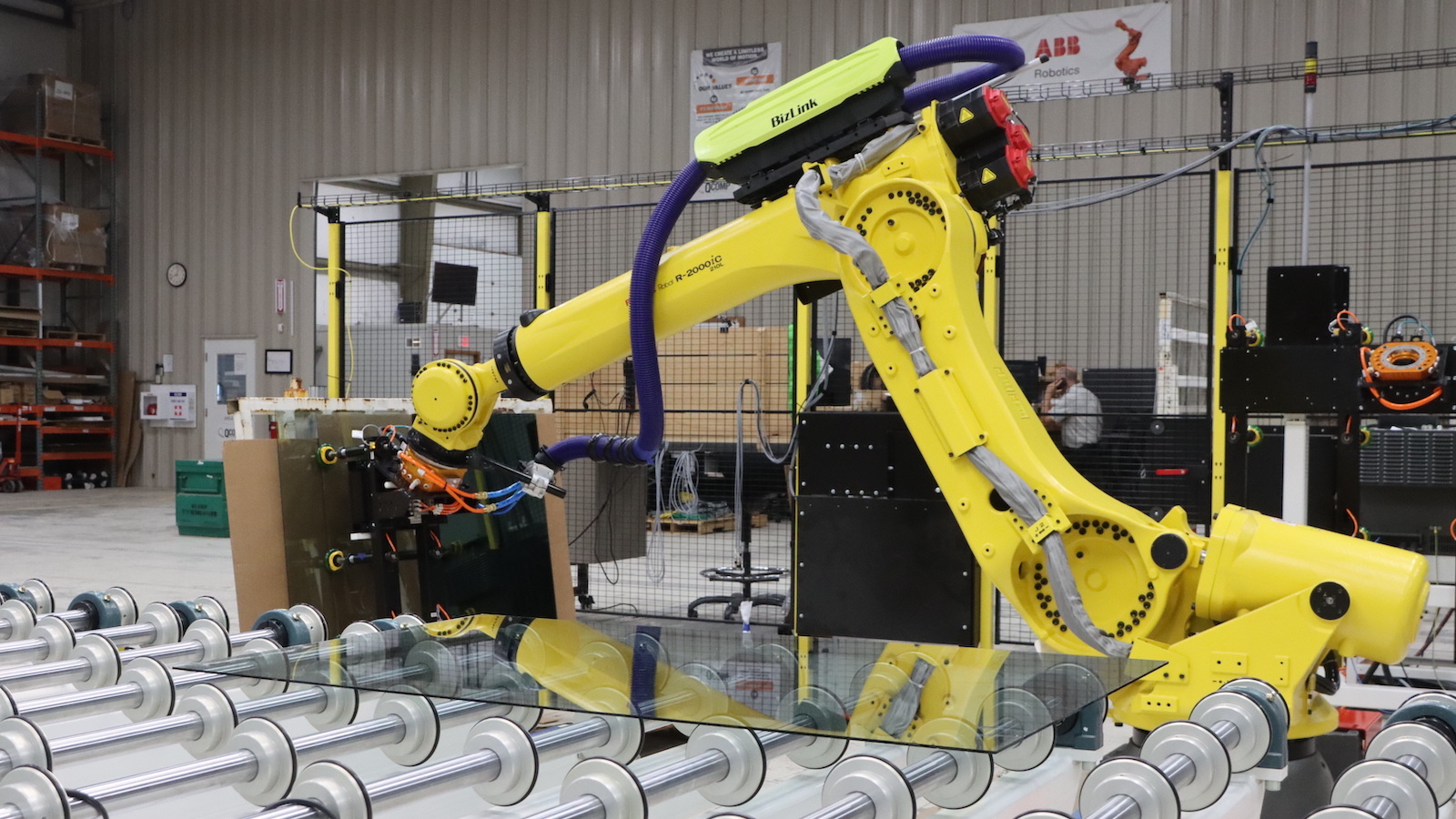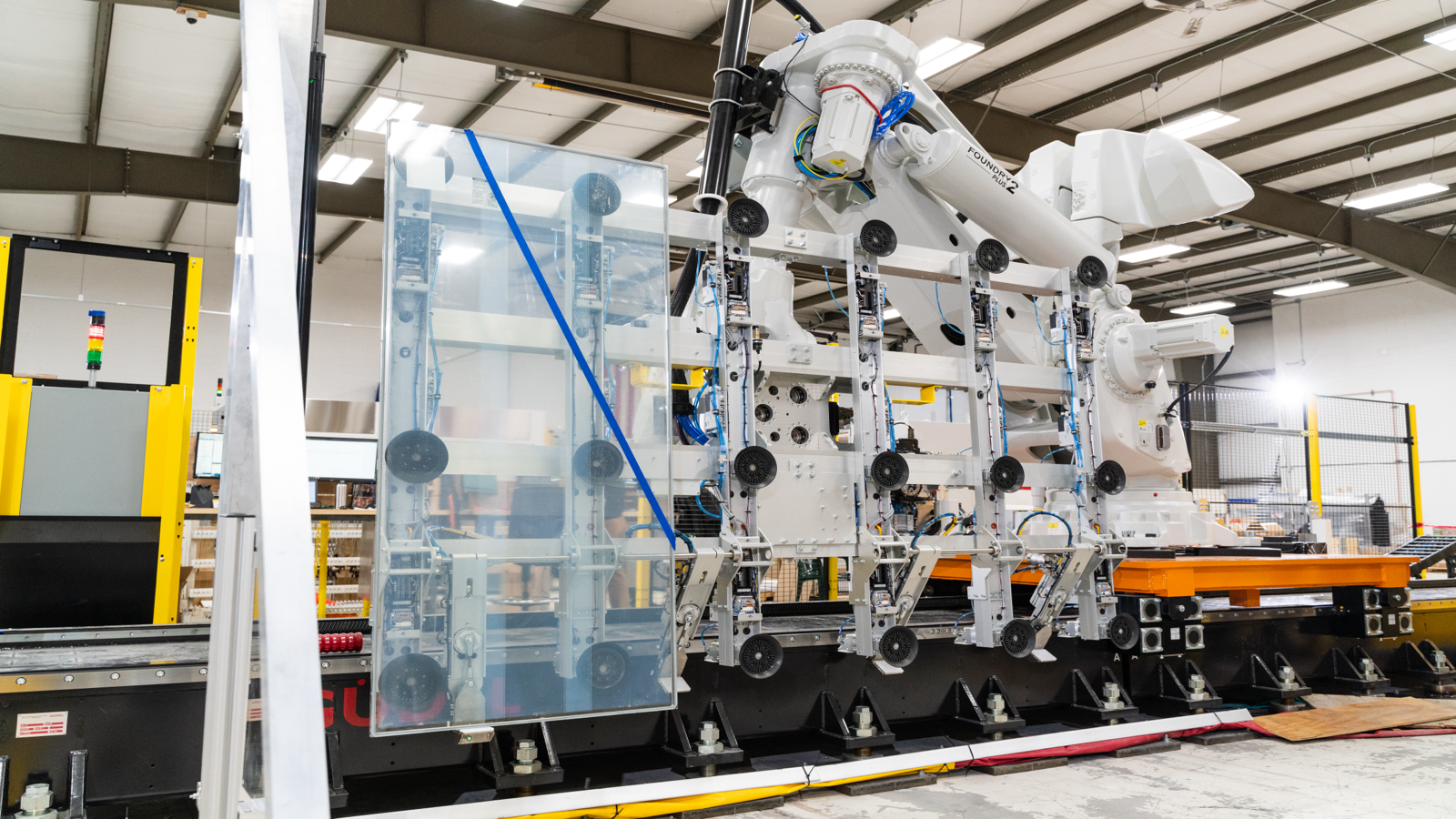Automation Challenge: Glass Industry Harp Rack Loading
Automation in the glass industry has come a long way to improve safety and throughput while reducing scrap. One of the most difficult automation challenges involves harp rack picking and placing.
Harp racks typically use a grid of coated metal rods that support glass panels, allowing them to be stored or transported vertically. The rods create separation between the panels, preventing scratches or other damage while holding them securely when moving through the production process.
Because of the narrow space and precision required to insert the glass, workers traditionally had to manually slide the glass panels out of each slot, which comes with inherent safety risks. New technology advances help to solve these issues.
Let’s dive into the challenges and how automation can overcome them, and be sure to check out the video showing harp unloading automation in action!
LEARN MORE: Automated Flat Glass Handling
Challenges of Glass Harp Rack Automation
Rather than being affixed to the floor, harp racks are often mobile, mounted to industrial casters that allow them to be moved from one part of a facility to another. Additionally, glass often varies in size and thickness and can lean within the rack from side to side, meaning it likely won’t be in the exact same position as the piece next to it.
Add to that the rack design. Rather than grasping a piece of glass evenly, the rack allows only a small portion of the glass to be accessible to the robotic tools. How do you pick an 8’ x 2’ piece of glass when only a small triangle of the glass is exposed outside the rack?
Combined, all these factors are a challenge for robotics which are traditionally programmed using set calculations. Automation works most easily when the product is always the same size and in the same position at the same time. Harp rack unloading of glass panels is anything but consistent.
Glass Line Harp Rack Automation
QComp has engineered advanced robotic automation that can perform the complex task of harp rack loading and unloading. We’ve developed unique tooling aided by 3D vision technology and sensors that “find” the exposed portion of the glass and maneuver it out of the harp rack.
As more surface of the glass panel is extracted, vacuum tooling grasps the remaining portion and places the glass onto a conveyor or a specially designed slotted rack for the next phase of production or shipping.
To overcome the challenges of varying sizes and positions, we use parametric programming. Even seemingly identical pieces of glass can vary slightly in width or length — enough to “confuse” a robot. Rather than pre-programming positions and paths for every possible size iteration, the end-of-arm tooling positions are calculated based on data transferred to the robot from the production line. Programming the robot to move based on the data rather than fixed inputs is challenging but provides a very versatile solution that can accommodate any size within the designated range.
Why Leverage Harp Rack Unloading Automation?
In all manufacturing sectors, automation is hailed for its ability to decrease cycle times and increase production capabilities. Increasingly, it’s leveraged to ease labor shortages for positions that are difficult to fill.
These are all significant benefits. However, the number one reason that glass manufacturers want to implement harp rack unloading technology is worker safety. There are inherent risks associated with manual glass handling such as cuts from sharp or broken glass and ergonomic injuries from handling heavy panels. Automation significantly reduces the risks of injury.
QComp has designed and deployed more than 30 robotic cells that pick glass from various styles of racks. Major glass manufacturers rely on our solutions to improve their operations.
Harp rack unloading isn’t the only type of robotic automation to consider. At QComp, we’ve mastered many aspects of glass handling and encourage you to explore our solutions which can improve production and deliver significant ROI while supporting your safety initiatives. Access our guide, Improve Safety and Efficiency in Glass Manufacturing with Robotics, to learn more.
Share this
You May Also Like

Cable Management in Glass Line Automation: An Overlooked Necessity
Learn how QComp and BizLink tackle cable durability, uptime, and safety challenges in glass robotic automation, redefining efficiency in glass manufacturing lines.

Optimizing Glass Line Load and Unload with Robotic Automation
Robotic glass line load/unload automation improves safety, efficiency, and productivity. Discover robotic solutions to optimize handling in glass manufacturing.

Jumbo Glass Robotics
Learn how QComp is pushing the limits on the ability to pick and inspect an extremely wide range of glass and glass assembly sizes & shapes.
